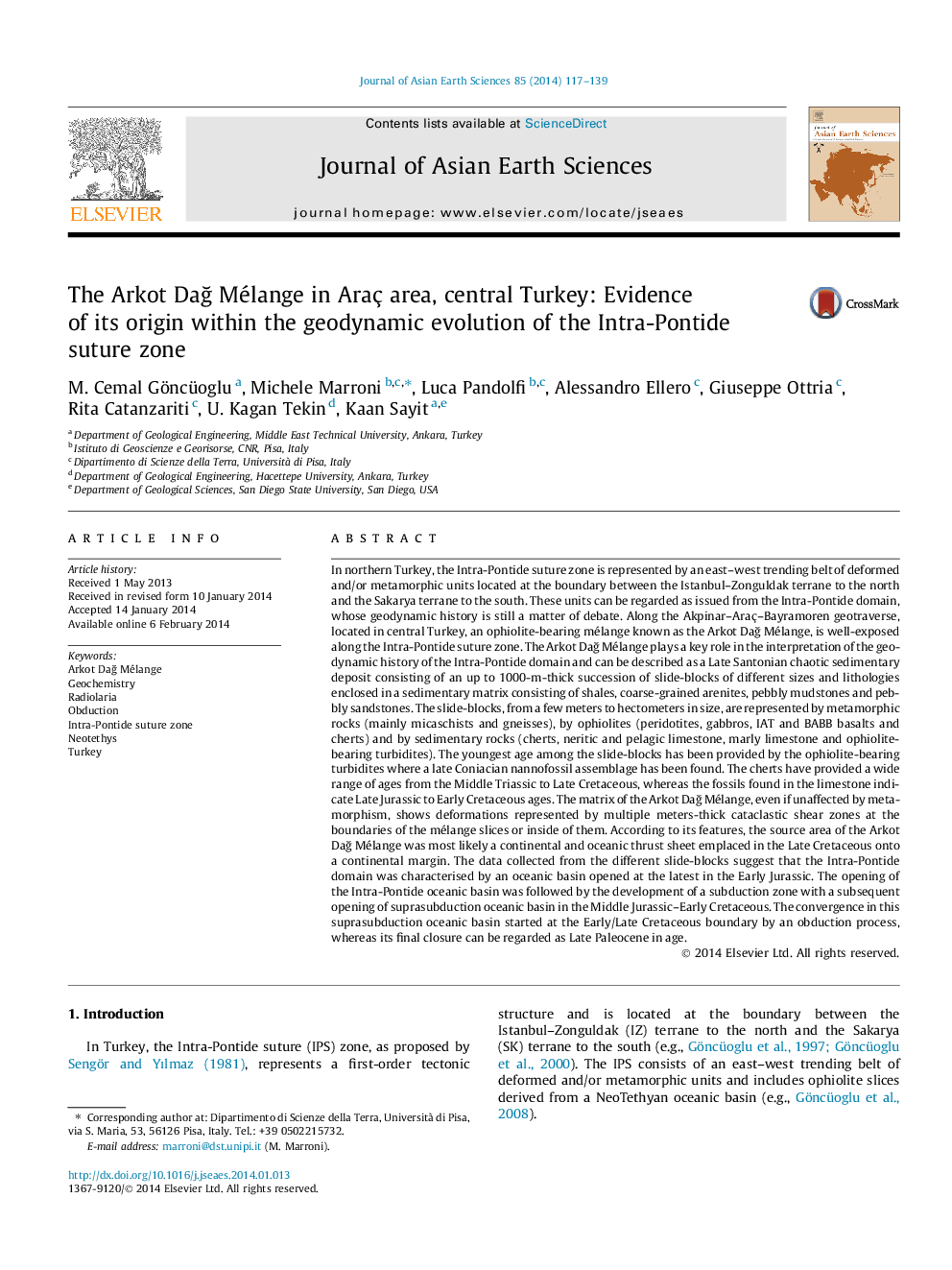| کد مقاله | کد نشریه | سال انتشار | مقاله انگلیسی | نسخه تمام متن |
|---|---|---|---|---|
| 4730653 | 1640383 | 2014 | 23 صفحه PDF | دانلود رایگان |

• This paper bears new data on the Arkot Dağ Mélange, Intra-Pontide suture zone, Turkey.
• The results allow to outline the tectonic history of the Intra-Pontide suture zone.
• The Arkot Dağ Mélange is a Late Cretaceous obduction-related sedimentary deposits.
• A geodynamic scenario from Triassic to Tertiary is attempted for the northern Turkey.
In northern Turkey, the Intra-Pontide suture zone is represented by an east–west trending belt of deformed and/or metamorphic units located at the boundary between the Istanbul–Zonguldak terrane to the north and the Sakarya terrane to the south. These units can be regarded as issued from the Intra-Pontide domain, whose geodynamic history is still a matter of debate. Along the Akpinar–Araç–Bayramoren geotraverse, located in central Turkey, an ophiolite-bearing mélange known as the Arkot Dağ Mélange, is well-exposed along the Intra-Pontide suture zone. The Arkot Dağ Mélange plays a key role in the interpretation of the geodynamic history of the Intra-Pontide domain and can be described as a Late Santonian chaotic sedimentary deposit consisting of an up to 1000-m-thick succession of slide-blocks of different sizes and lithologies enclosed in a sedimentary matrix consisting of shales, coarse-grained arenites, pebbly mudstones and pebbly sandstones. The slide-blocks, from a few meters to hectometers in size, are represented by metamorphic rocks (mainly micaschists and gneisses), by ophiolites (peridotites, gabbros, IAT and BABB basalts and cherts) and by sedimentary rocks (cherts, neritic and pelagic limestone, marly limestone and ophiolite-bearing turbidites). The youngest age among the slide-blocks has been provided by the ophiolite-bearing turbidites where a late Coniacian nannofossil assemblage has been found. The cherts have provided a wide range of ages from the Middle Triassic to Late Cretaceous, whereas the fossils found in the limestone indicate Late Jurassic to Early Cretaceous ages. The matrix of the Arkot Dağ Mélange, even if unaffected by metamorphism, shows deformations represented by multiple meters-thick cataclastic shear zones at the boundaries of the mélange slices or inside of them. According to its features, the source area of the Arkot Dağ Mélange was most likely a continental and oceanic thrust sheet emplaced in the Late Cretaceous onto a continental margin. The data collected from the different slide-blocks suggest that the Intra-Pontide domain was characterised by an oceanic basin opened at the latest in the Early Jurassic. The opening of the Intra-Pontide oceanic basin was followed by the development of a subduction zone with a subsequent opening of suprasubduction oceanic basin in the Middle Jurassic–Early Cretaceous. The convergence in this suprasubduction oceanic basin started at the Early/Late Cretaceous boundary by an obduction process, whereas its final closure can be regarded as Late Paleocene in age.
Journal: Journal of Asian Earth Sciences - Volume 85, May 2014, Pages 117–139